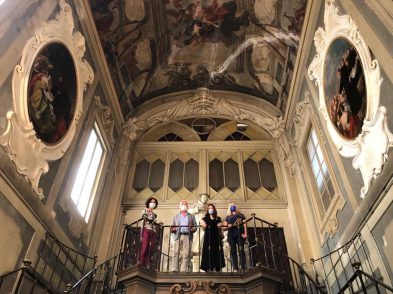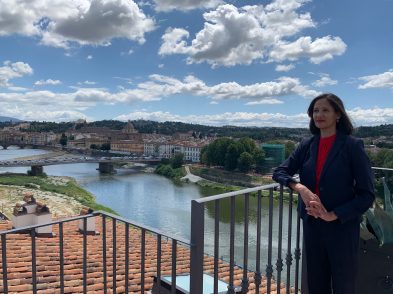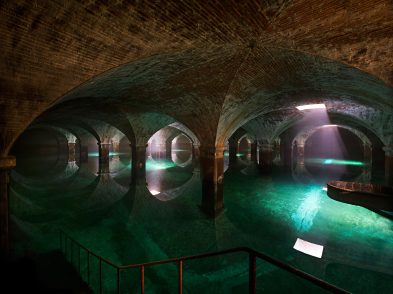For three years, I had the good fortune of living with two Italian painters. This is relevant to me, mostly because when it was my turn to make a meal, I always got painter-related commentary. They never told me how good or bad my food tasted. Instead, they’d say things like, “If you’d had added a little green to this dish, it would have been più bello, more beautiful.”
In Italy, nice people are said to be as good as bread. But good food in Italy can’t be just good, it must also be beautiful. If I started to get huffy or whiny about my room-mates comments and protested, “What does color have to do with it?” they would shake their heads and say in wise voices, “Anche l’occhio vuole la sua parte-the eye also wants it’s part. To be truly enjoyed, food must also be beautiful.”
“Beautiful” is not normally a word used in English when describing food, unless one is talking about the ice sculptures at a country club buffet, or the roasted pork with pineapple served at a Hawaiian Luau. English speakers might use “beautiful” to describe a seven-layer wedding cake, or a seven-dish traditional Japanese meal with lacquered chopsticks and edible flowers. Most would certainly not use the word beautiful to describe the unpleasantly brown rice and mushroom dish that Italians often refer to as un bel risotto di funghi.” An English speaker would not say “I would like ‘a beautiful dish of prosciutto,’ or ‘a beautiful dish of pastasciutta.’” Pastasciutta, literally “dried pasta,” is the expression that differentiates spaghetti, tagliatelle, and farfalle with sauce, from pasta in brodo or pasta in broth. Pasta in broth, is also beautiful, by the way, and you will often be able to trace the underlying excitement in the voice of whoever sings the virtues of un bel brodino caldo on a winter evening.
I started cooking in Italy as a principiante or absolute beginner. I quickly learned that by Italian tastes, my sauce was too raw and my pasta, too cooked. To say the least, I had to start cooking from square one. When you are in square numero uno, you learn a few things. First, you are taught that salt and oil are good for you. Salt helps keep your blood pressure up, which is a positive thing, especially when the summer is humid and airless. Olive oil, on the other hand, serves to make your insides sufficiently slippery, so to insure proper functioning of the kidneys. When cooking for Italians, one must consider food combinations, their effects on the bowel, food texture, flavor, and especially color combinations and presentation on the plate.
When it comes to creating beautiful meals, colorful food is essential. Crowding food is also unforgivable, because, even there, anche l’occhio vuole la sua parte. This expression explains why during one traditional meal in Italy, each person uses more plates than an American college student uses in a month. Once, when my grandmother was busy laying out seven plates per person, I told her in my candid New World way that it really wasn’t necessary to change (and wash) so many dishes. She gave me a pained look and told me about the War, “When there was nothing to eat, we always had una tavola nobile, a noble table, with many dishes anyway.” It was no use trying to convince her. That was, of course, before I understood that crowding food is a sin. And no matter what I say to dissuade her, the table will continue to be noble even if the war ended fifty years ago and there is now enough food to feed any army.
Italians cannot help their craving for esthetics. And they easily relate food and beauty because they love both aspects equally well. Food is necessary for sustaining the physical body, and beauty is necessary for sustaining the soul. Thus, the combination of both elements provides pure nourishment. Italy, after all, is a country of artists. It is said that sixty percent of the world’s art is hosted in Italy. Around here, food, is just another art form. And if you invite someone over for a meal, the food you serve has to have all the qualities of a good dinner guest. The menu should have flair. It should be beautiful, creative, and independent. In order to truly satisfy it should look like it’s enjoying itself on the plate, because after all, the eye does want its part.







